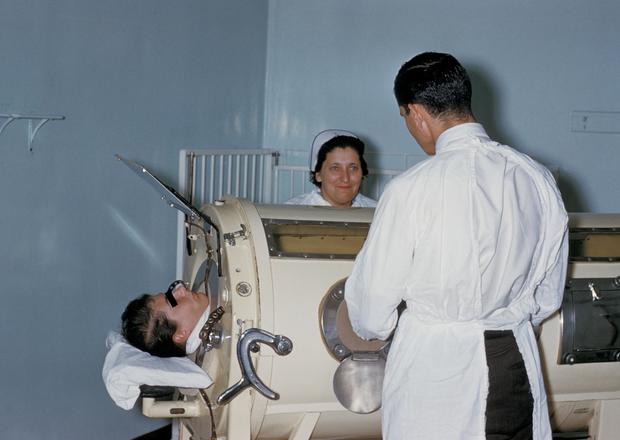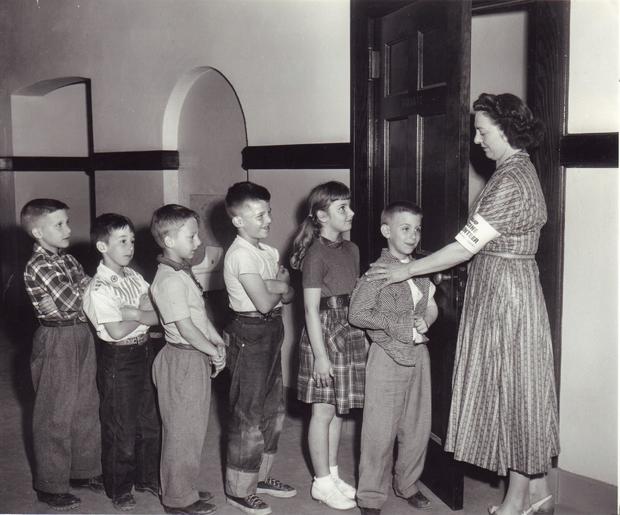Did I get the polio vaccine? How to know if you are protected against the virus
[ad_1]
A case of polio was identified in Rockland County, New York and now the virus that causes the disease has been detected in New York City’s wastewater as well as two other counties’. The New York Health Department said this indicates the virus is being spread within local communities, and that hundreds of people could be infected.
Polio is “a serious and life-threatening disease,” the state health department said. It’s highly contagious, and people can spread the virus before they start showing symptoms — which can take as long as 30 days after becoming infected.
Until the recent uptick, the polio vaccine had virtually wiped out the disease for generations of Americans.
How do you know if you’ve been vaccinated against polio?
Polio in the U.S.
Outbreaks of polio killed thousands of people in the U.S before the introduction of the first polio vaccine in 1955. The disease spreads from person to person, usually through contamination from feces. In some cases it can infect a person’s spinal cord, causing limb weakness or paralysis that can leave a person unable to walk or breathe on their own.
CDC / Getty Images
The disease often affected children, and worried parents kept their kids home from public pools, movie theaters and other summer activities, when cases typically spiked.
President Franklin D. Roosevelt survived a bout of polio in 1921 and was left paralyzed. He founded the National Foundation for Infantile Paralysis, now known as the March of Dimes, which pioneered development of the polio vaccine.
In 1956, Elvis Presley encouraged young Americans to get the polio vaccine by getting his shot before the press, ahead of an appearance “The Ed Sullivan Show.”
Seymour Wally/NY Daily News Archive via Getty Images
Thanks to a successful vaccination program, polio was officially declared eliminated from the United States in 1979.
How to determine your polio vaccination status
Every U.S. state has had a longstanding requirement for children to receive the polio vaccine before entering school, but there is no federal law that requires children to have certain vaccines in order to enter school.
For example, New York requires a minimum of seven vaccines for kids to attend pre-K — public or private — including the polio, tetanus, measles and hepatitis B vaccines. Several more vaccines or doses are required before entering higher grades.
Because of those childhood immunizations, public health officials presume most adults in the United States have immunity to polio.
To double-check which immunizations you have received, the CDC suggests asking parents or caregivers, locating old documents from your childhood, or even asking former schools, doctors and employers, as they may have kept a record of proof of immunization.
Walter del Toro/Newsday RM via Getty Images
The CDC recommends children get four doses of the polio vaccine — at ages 2 months, 4 months, 6–18 months, and 4–6 years. Some states only require three doses.
Most adults do not need the vaccine, as they were likely vaccinated when they were children. But the CDC says some adults at higher risk for polio — including health care workers who may be exposed to the virus, lab workers and people traveling to certain parts of the world where polio occurs — may want to consider vaccination. And of course, unvaccinated adults are considered high-risk.
Why is polio back?
One unvaccinated young adult in Rockland County, New York, who was previously healthy, developed paralysis in their legs and was confirmed to have polio, health officials said in late July. It was the first known case in the U.S. since 2013.
Though the virus has been eradicated in much of the world, cases still occur in several countries.
Poliovirus was found in wastewater samples from Rockland County and nearby Orange County, as well as New York City, indicating wider spread. Officials are still investigating its origin and it is unclear how many people may infected.
State Health Commissioner Dr. Mary T. Bassett said the single case of polio is “just the tip of the iceberg.”
“Based on earlier polio outbreaks, New Yorkers should know that for every one case of paralytic polio observed, there may be hundreds of other people infected,” Bassett said in a statement Aug. 4. Officials are urging anyone unvaccinated to get immunized right away.
After reports of polio in New York, health officials in Canada said they would start testing wastewater in a number of cities, CBC News reports.
Earlier this year, polio was detected in sewage from London and health officials in the U.K. urged people who had not been fully vaccinated to get their shots, and announced they would offer boosters to children in London.
Last year, when a case of polio was discovered in an unvaccinated 4-year-old in Jerusalem, Israel’s Ministry of Health also advised anyone who hadn’t completed their vaccinations “to do so with all due haste.”
[ad_2]
Source link














